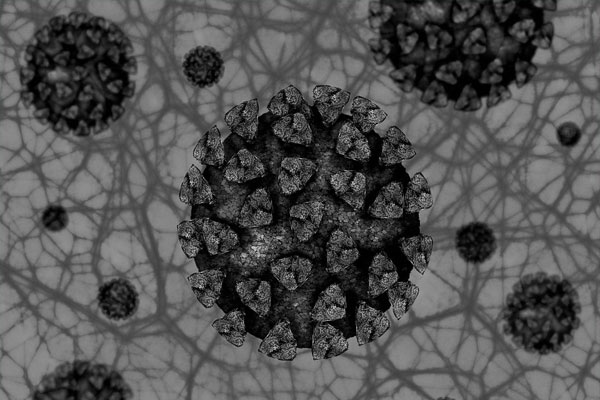By Dr Sunil Kumar Kota
In the current times of COVID-19, the cases of black fungus is in upswing.
Medically it is labelled as Mucormycosis. These are caused by 6 fungi in the
Mucorales order, namely: Rhizopus, Mucor, Rhizomucor, Cunninghamella,
Saksenaea, Apophysomyces. In the environment, these fungi are commonly found in
wet soil, unclean water, compost and manure, Stored grains, rotten flower and leaves
etc. The fungal spores predominantly enter into body by inhalation route, sometimes
they enter via skin especially in people working in construction sites, engaged in
farming and gardening. These cases occur usually after recovery & discharge of
COVID 19 patients, but they can occur at any stage, even while the patient is admitted
and getting treated for COVID-19.
Risk Factors:
This Fungal disorder is known since long and it predominantly affects people
with compromised immunity including those with Diabetes (with prolonged
uncontrolled sugars); injudicious use of long term steroids , antibiotics and antifungal
voriconazole; chronic kidney, liver and lungs disorders; organ transplant (liver,
kidney, bone marrow, stem cells) and immunosuppressive therapy; cancer (mostly
blood cancers) & chemotherapy; AIDS, burn injury, Malnutrition; usage of iron
chelating agent Desferoxamine etc. People engaged in construction work, farming,
gardening, wood work are also more prone to develop this infection. The following
can be common sources of Mucor in hospital setting including hospital linen, nearby
construction sites, tongue depressors, adhesive tapes, intravenous canula.
The immunocompromised state of COVID-19 can also be a risk factor for
Black fungus. Especially it is found in the affected people with moderate to severe
forms of disease requiring steroids, long term oxygenation, prolonged mechanical
ventilation and ICU stay, Tocilizumab treatment and those with elevated biomarkers
like ferritin, interleukin-6. According to some recent literature, indiscriminate usage of
Zinc and over indulgence in steaming can sometime harm our nasal mucosal surface
giving easy passage to fungus to invade our body. Only 30-40% of patients with Black
Fungus have pre-existing diabetes. Some of the others are diagnosed to have new
onset of diabetes. In the era of COVID-19, the development of Mucormycosis has
been rampant, especially in patients having steroid-induced diabetes. People with high
blood sugars have elevated free Iron and ketone in the blood, which are used by the
fungus as feeding substrate. There is no age or sex predilection for this fungal
disorder. Since all the immunocompromised states occur predominantly in adults to
elderly, the fungal disorder is seen more commonly in those age groups. However,
Children with any of the above conditions or blood cancers are equally prone. These
cases occur usually after recovery & discharge of COVID 19 patients, but they can
occur at any stage, even while the patient is admitted and getting treated for COVID-
19.
Clinical Features:
It predominantly affects lungs (Pulmonary Mucormycosis). It also affects nose,
eyes, jaws and brain (Rhino Orbito Cerebral Mucormycosis). These 2 forms are
commonly seen in Diabetics. In people with extremely immunocompromised state, it
can affect skin, gastrointestinal tract, kidney and then it can disseminate in to the
whole body. When lungs get affected- there is fever, cough with or without sputum
production, breathlessness. There can be other symptoms of nose- stuffy nose, dark
nasal secretion (blackish/ bloody), one sided severe pain in the nose, jaw (cheek bone/
maxilla) and head; Eyes- swelling, redness around eyes and nose, bulging eye ball,
blurred or double vision; Jaws- tooth ache, loosening of teeth, one sided facial pain
over cheeks, numbness or swelling; Brain- altered mental status, Nerve paralyses, fits,
paralyses; Stomach: Bloody vomiting Etc. Sometimes there can be development of a
black patch over bridge of nose or palate (roof of mouth). Occasionally skin can get
affected by intravenous canula giving rise to black patch (Eschar)
Prevention:
Proper Sugar control, avoidance of indiscriminate use of antibiotics, steroids,
antifungal agents; use of sterile or distilled water for humidification of oxygen;
avoidance of excess usage of zinc and steaming are some means proposed to protect
one from any chances of infection. Exposure to moist, damp and dusty areas should be
avoided. Similarly during gardening and visit to construction site, granaries; it is
advisable to use masks, full sleeve shirts, long trousers, gloves while handling soil,
shoes. Personal hygiene should be maintained through scrub bath
Diagnosis:
The specimen (tissue) is subjected for fungal staining (KOH staining), culture,
PCR (Polymerase Chain Reaction) and MALDI=TOF test. The specimen can
sometimes be obtained by deep nasal swab or nasal endoscopy. CT scan is useful for
checking any bony erosions. However, MRI is more useful to detect brain
involvement
Treatment:
The mainstay of treatment includes good sugar control, antifungal medications
and surgical debridement. Antifungal treatment options include intravenous
Amphotericin B (preferably liposomal form) followed by oral Posaconazole and
Isavuconazole tablets. This has to be continued for several weeks (4-6 weeks) with
periodic monitoring of kindey function, blood electrolytes. Surgical debridement is a
cumbersome procedure lasting for about 4-5 hours for people with bone eroding form
of Black fungus. In this procedure the dead portions of nose, orbit, jaw etc have to be
surgically excises, which is quite disfiguring. Generally proper sugar control by
Endocrinologist/ physician in addition to proper evaluation by experts from
departments of ENT, Neuro surgery and Ophthalmology is needed. Early and timely
identification of symptoms followed by diagnosis and proper treatment with
antifungals can reduce the chances of debridement. Unless treated timely, this disorder
is life threatening in 25-60% of cases.
[The writer is a Berhampur-based medical practitioner with specialisation in medicine and endocrinology.]
DISCLAIMER: The views expressed in the article are solely those of the author and do not in any way represent the views of Sambad English.


Comments are closed.